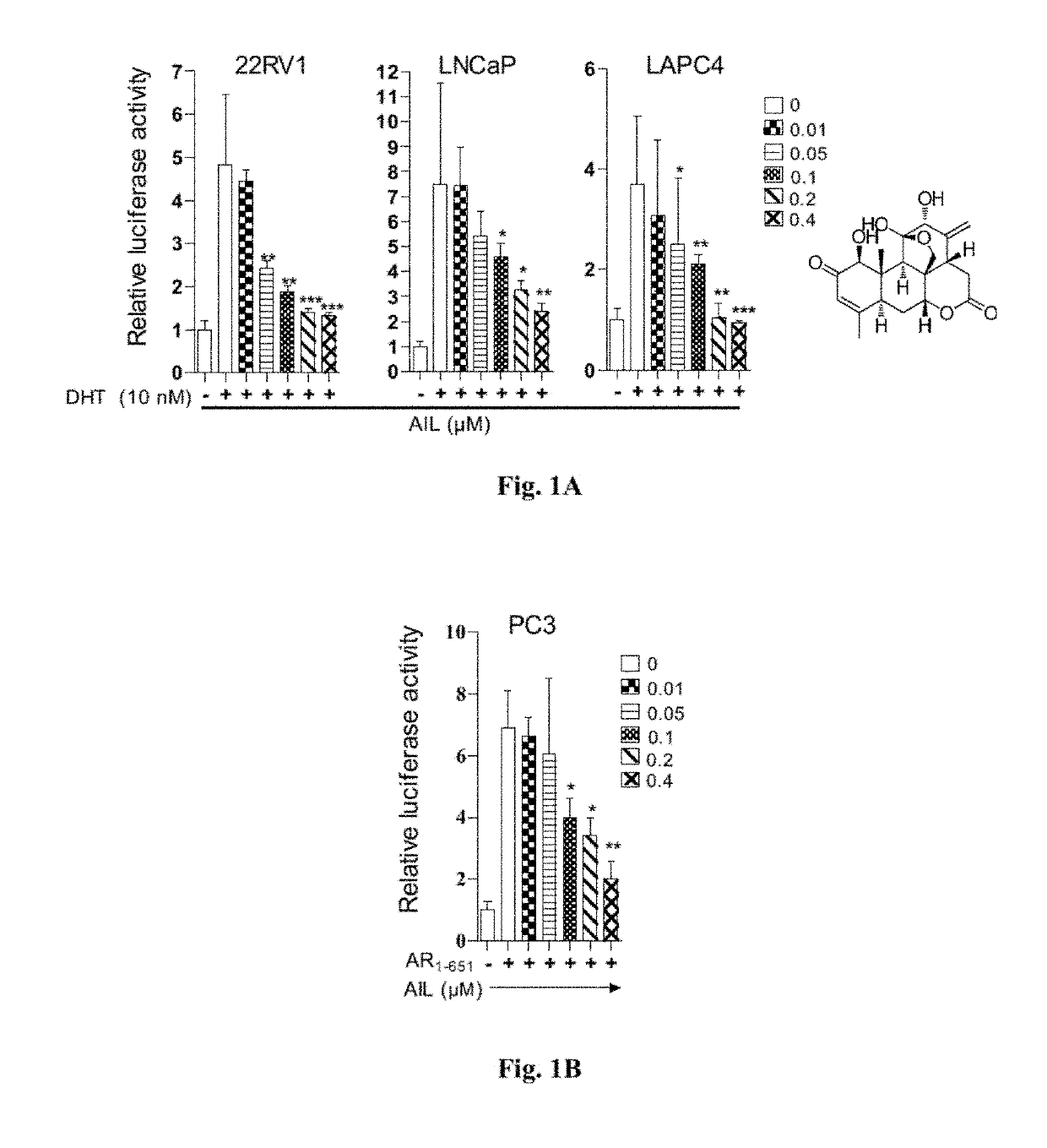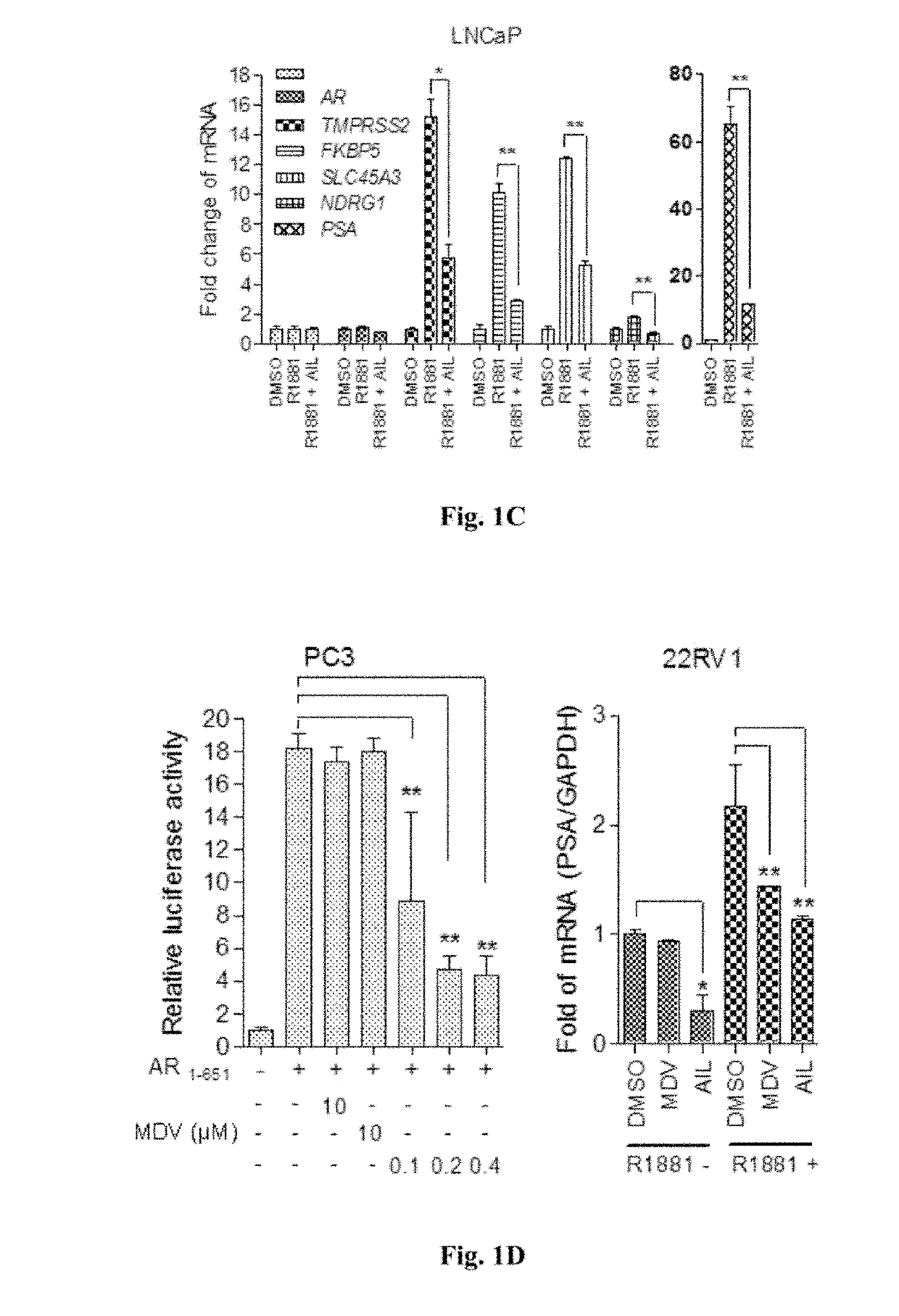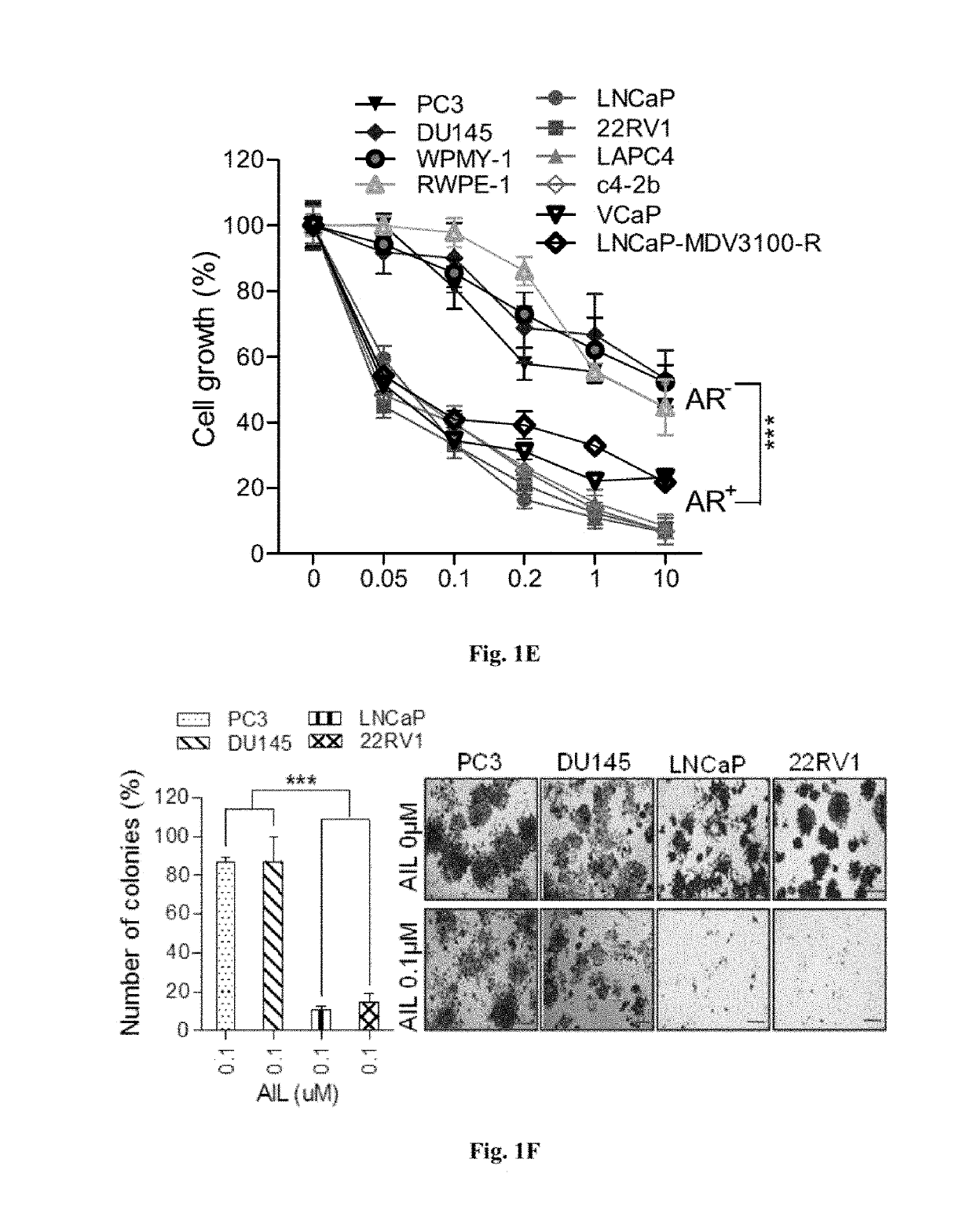Cancer treatment method using ailanthone compounds
a treatment method and technology of ailanthone, applied in the direction of medical preparations, organic active ingredients, pharmaceutical active ingredients, etc., can solve the problems of affecting the nuclear localization of ar, and achieve the effects of good bioavailability, high solubility, and favorable drug-like properties
- Summary
- Abstract
- Description
- Claims
- Application Information
AI Technical Summary
Benefits of technology
Problems solved by technology
Method used
Image
Examples
examples
[0150]The following examples are given for further illustrating the specific solutions of the present invention.
Materials and Methods
Cell Culture
[0151]Prostate cancer cell lines c4-2b, LAPC4 and normal prostate epithelial cell line RWPE-1 used in this study were kindly provided by Dr Ying-Hao Sun (Department of Urology, Changhai Hospital, Shanghai, China). Other human prostate cancer cell lines were purchased from the Cell bank of the Chinese Academy of Science. The cell lines were authenticated by short tandem repeat analysis and mycoplasma contamination was tested by the PCR Mycoplasma Detection Set (Takara, Otsu, Japan). 293T cells were routinely maintained in DMEM (GBICO), while prostate cancer cells were cultured in RPMI 1640 (GBICO). Media were supplemented with 10% FBS (BioWest, cat. no. S1580-500) and 1% penicillin / streptomycin unless otherwise specified. RWPE-1 was cultured in serum-free medium (Invitrogen, Carlsbad, Calif.).
Dual Luciferase Screening Assay
[0152]For dual luc...
example 5
Induction of AR Degradation by AIL
[0191]To investigate why AIL reduced the expression of AR protein but not its molecular chaperones, we tested the effect of AIL on AR protein stability. Surprisingly, AR protein stability was significantly reduced under AIL treatment (FIG. 4A). However, there was no significant effect on AR and AR-V7 mRNA when treated with the same concentration of AIL, although the PSA mRNA level was decreased (FIG. 4B). To test whether AIL induced AR degradation through the proteasome pathway, we treated cells with the proteasome inhibitor MG-132, which resulted in a marked suppression of AIL-induced AR depletion (FIG. 4C). More importantly, treatment with AIL induced ubiquitination of AR (FIG. 4D). Interestingly, while AIL treatment decreased AR, AKT as well as Cdk4 protein levels, it did not influence their chaperones HSP90, HSP70 and HSP40 which were all essential for the HSP90-HSP70 chaperone complex (FIG. 13F). To further illustrate this mechanism, we perform...
example 6
Interaction of AIL with p23 In Vitro
[0193]Foldosome complex assembly occurs through a series of steps, beginning with HSP40 and HSP70 binding to AR, followed by HSP90 and HOP, and then succeeded by ATP-dependent binding of p23, FKBP51 and FKBP52 which displace HSP40, HSP70, and HOP24. Additional foldosome proteins include cdc37 and HDAC636. Accordingly, we next determined whether AIL disturbed the interaction between these proteins and HSP90. AIL obviously prevented the interaction between p23 and HSP90, but had no significant influence on the interaction of other proteins with HSP90 (FIG. 5A). By Biacore assay, we confirmed that there was no interaction between AIL and HSP90 (FIG. 15A). However, AIL interacted directly with p23 (KD=1.79×10−06 M) (FIG. 5B). Celastrol (CEL) was used as a positive control of p23 interaction (FIG. 15B). We also performed a molecular docking modeling simulation using the x-ray crystal structure of the p23 functional domain, and identified a potential bi...
PUM
 Login to View More
Login to View More Abstract
Description
Claims
Application Information
 Login to View More
Login to View More - R&D
- Intellectual Property
- Life Sciences
- Materials
- Tech Scout
- Unparalleled Data Quality
- Higher Quality Content
- 60% Fewer Hallucinations
Browse by: Latest US Patents, China's latest patents, Technical Efficacy Thesaurus, Application Domain, Technology Topic, Popular Technical Reports.
© 2025 PatSnap. All rights reserved.Legal|Privacy policy|Modern Slavery Act Transparency Statement|Sitemap|About US| Contact US: help@patsnap.com



